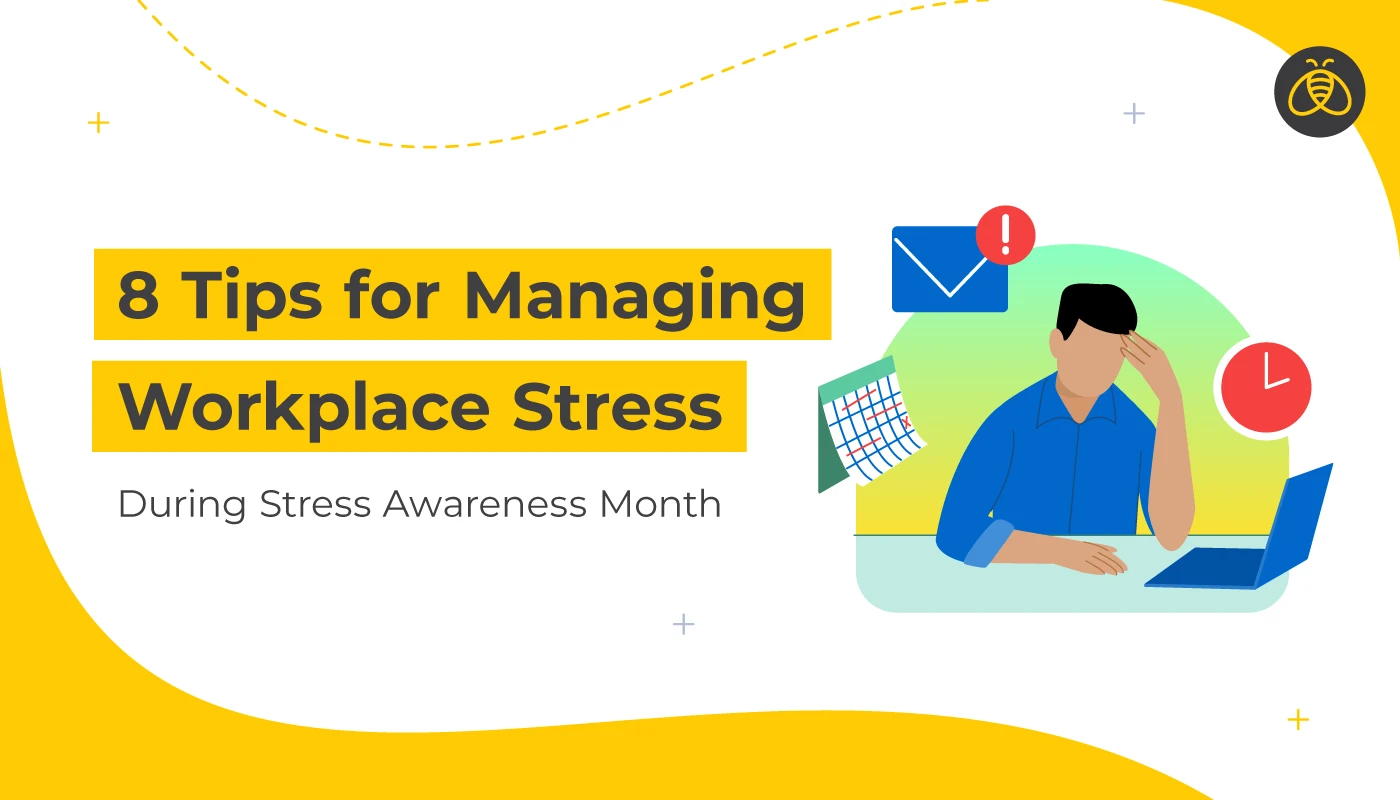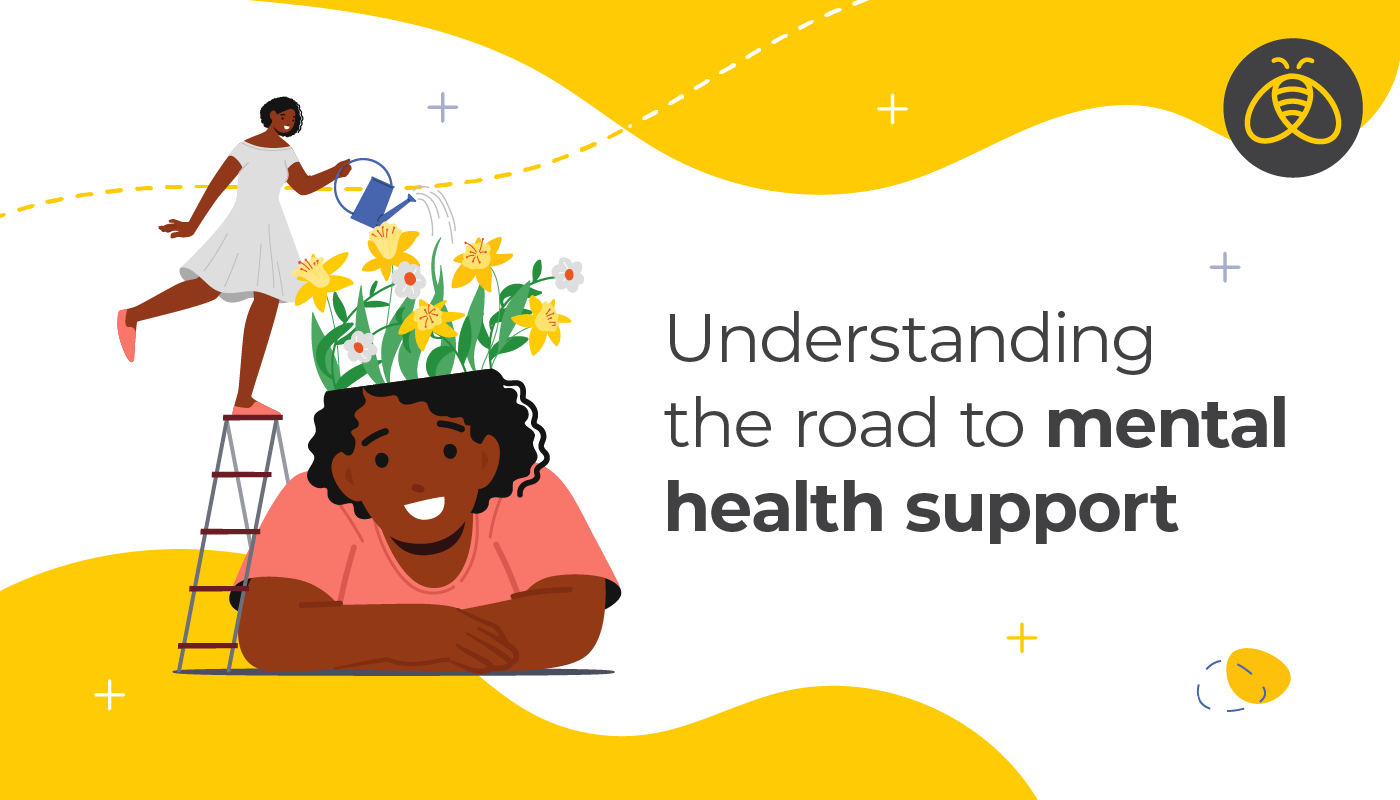8 Tips for Managing Workplace Stress During Stress Awareness Month
By: Benefits by Design | Tuesday April 11, 2023
Updated : Thursday August 8, 2024
Workplace stress comes in many forms. Yet no matter the cause, we all know that it affects our output. A little bit of stress can help motivate an employee to work diligently, but too much stress can hinder their performance, leading to more stress, leading to reduced productivity, leading to… – you get the idea. It’s a vicious cycle.
The Prevalence of Workplace Stress
According to the 2022 Benefits Canada Healthcare Survey, the below concerns cause employees the most stress:
- Personal Finances – 35%
- Workload – 30%
- Work-Life Balance – 30%
- Personal relationships – 27%
- Health Concerns – 26%
What’s more, the Mental Health Index by Telus Health reported that in February 2023, 78% of Canadians had a moderate to high mental health risk.
So how does this affect your business? Another study found that stress caused 37% of employees to lose one hour or more per day in productivity. It also found that a fifth of employees miss more than six days per year due to stress.
Tips for Reducing Workplace Stress
The good news is that there are many things you can do to help your employees manage or reduce their workplace stress. And with less stress, comes more success!
1. Help Employees Manage Work-Life Balance
One of the biggest causes of workplace stress is not having enough time. And there are many factors that can contribute to this. A heavy or unmanageable workload could be due to employees not being able to say no, or management expecting more than is doable. Poor time management or unrealistic expectations can also lead to burnout and stress.
Encouraging a healthy work-life balance can help.
- Make sure employees aren’t working after hours, and that they are taking regular breaks
- Never schedule meetings outside of working hours
- Schedule less meetings overall
- Ensure workloads are appropriate and manageable
- Continually check-in (once a month or at maximum once a week is sufficient, otherwise you run the risk of overscheduling check-ins, which uses valuable time)
2. Eliminate Extraneous Tasks
There’s a good chance that there are some tasks being performed by your employees today that could be automated, or even eliminated. Sometimes we do things simply because “that’s the way it’s always been done.” Ask your employees if they have any ideas – they probably don’t even realize they do!
Confirm if your processes and procedures are necessary and get rid of any that are not needed. If possible, automate anything you can. On an employee level, it’s important to set them up for success by making sure they understand their priorities so they can tackle those first.
3. Foster Continual Learning and Development
Allow employees to dream! Are there other positions within the company they are interested in? Having a future goal to work towards provides motivation for employees. Keeping things in perspective can help with stress levels. Employees who have the bigger picture in mind are less apt to be stressed about specific problems.
Provide upskilling opportunities for your employees when possible. Offering professional development dollars that can be used towards college or university courses is a great way to support employees. And when you’re looking for someone to fill a position, promote from within. It shows employees they can continue to advance their career if they stay with your company. And having a bright future can help reduce overall stress.
7 Ways Employee Professional Development Can Benefit Your Business
4. Nurture Positive Company Culture
Communication difficulties can cause stress. Give employees the space to develop relationships. For example, allow non-work-related conversations from time to time (in the kitchen, passing a co-worker’s desk, at the beginning of a video meeting). This lets employees get to know each other on a personal level and creates a more cohesive team in the long run. Make sure it’s kept to a reasonable level, as you don’t want employees to feel like they don’t have enough time to complete their work.
You can also set-up team building activities, both virtual and in-person, to help employees get to know one another. Why is this so important? Because working with people you don’t know makes it more difficult to communicate.
6 Dos and Don’ts for Building a Successful Workplace Culture
5. Enhance the Work Environment
Stress can be relieved simply by being in a calming environment. It’s hard to feel anxious if you are in a relaxed space. Simple things like office plants can help. Make sure the space is not too cluttered. Give it some character without being too bright. Open concept offices can get the creative juices flowing, but be careful with this, as all employees are different. Some may find it stressful to be alone in a closed office, while others may find it stressful if they are not in a closed office.
An ergonomic workstation can also help reduce workplace stress. When employees are working comfortably, it’s one less thing to worry or think about.
Lastly, walking meetings can provide stress relief. The physical aspect, as well as the change in scenery helps with innovation as well as anxiety and stress.
Healthy Workdays: Solutions for Common Office Health Problems
6. Offer Mental Health Support Services
When stress reaches certain levels, it may be time for the professionals to step-in. There are a host of different options available within the employee benefits landscape that give employees access to counselling and advice.
- An Employee Assistance Program (EAP) offers advice or counselling on a variety of life’s issues, including workplace stress.
- The Psychology or Registered Social Worker benefit through the Extended Health Care (EHC) plan can also give employees access to counselling services.
- And there are also internet-based cognitive behavioural therapy (iCBT) programs that can be accessed through the EHC. Plus, a lot of insurers are including lifestyle apps that focus on making positive change by rewarding plan members for their efforts. Green Shield’s Change4Life, or Best Life Rewarded (BLR), are both great examples of these programs.
Overcoming Mental Health Stigma in the Workplace & Support Employees
7. Provide Financial Support Beyond Employee Paycheques
Another huge stressor is financial worries. Help employees sleep at night, and be less stressed at work by offering financial support.
Group Retirement Solutions (GRS) can be a great attraction and retention tool as well. Retirement Savings Plan matching gives employees a way to save extra money for the future, and shows your commitment to them as valuable members of your team. But don’t stop there! If possible, set-up financial wellness webinars, create posters for the workplace, and remind them about their EAP services.
How to Build a Healthy Workplace by Focusing on Financial Wellness
8. Encourage Physical Wellbeing
It’s no secret that physical activity helps reduce stress. When we are stressed, it releases cortisol, which triggers that fight or flight response. The endorphins that are released when we are active help to calm that response, and thus we are able to control our workplace stress easier. Our minds and bodies are very much connected, so staying physically healthy help with our mental health, and vise versa.


